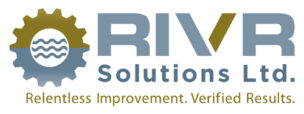By Greg Hastings
In this time of establishing New Year’s Resolutions for ourselves, we may have already won or lost in turning over a new leaf that may define 2021. Most of the time, we lose because either we aren’t motivated or are comfortable with old habits enough that we don’t care enough to break them. Even New Year’s Resolutions mean that we have to change, and change is hard.
Because it is a new year, I started out writing an article about goal setting. The article still may end up that way; however, I thought if I wanted to write about goal setting, I should have written this article in October in preparation for the coming year. Proactive organizations typically use Q4 to set their goals for the following year. However, as I continue to work with small to medium companies, typically with a sole proprietorship; I have observed that goal setting isn’t even on the owner’s radar. When I talk to employees in various companies, they don’t know when they have been successful in their job. As much as we are going to talk about goal setting in this article, we are really going to talk about setting the expectation of success.
Success is simply defined as the accomplishment of an “aim” or “purpose.” As owners or leaders, you must specify the aim or purpose for your organization, and then set the expectation of your employees to accomplish it. For many employees, success may be defined as obtaining a reward like a promotion or a raise. It may also be related to happiness; ‘am I happy in the job that I am in regardless of my performance or my results?’ Being recognized for a job well done or being happy doing what you are doing may feel good, but does that happiness align with the organization’s success? Good Leaders establish the aim or purpose for the organization and then establish the expectation among employees that the aim is achieved.
For any leader, recognizing accomplishments is always a good practice; however it may not necessarily need to result in a monetary reward or promotion. Recognizing a job well done may amount to a public display of appreciation. There is nothing wrong with a good pat on the back; but can an employee know they have achieved success before getting that recognition?
The first step in setting the expectation of success is establishing a vision of what success looks like. This vision is not an unrealistic abstract of what your organization could become, but a practical concept of your current challenges and what the organization looks like when you overcome those challenges. We are now entering into the world of goal setting, as this vision can be translated into very actionable metrics that will define success. This could be a revenue goal of 30% growth, or a profitability goal to reduce cost-of-goods-sold by 5%. This gives your team something to work towards, and if it is being tracked regularly, they may see the results of their actions even before the results are reviewed.
Once your measures are in place, and the expectations of achieving those goals are established; the tough part of accountability now comes into play. We always want to think the best of our employees. We hope that they will step up and take these goals seriously, but what happens when goals aren’t achieved? Many times goals are set, but the expectation is never established to intentionally make changes so that those goals are achieved. Sometimes, the metric is set, but we just watch the numbers go up and down from month to month, without real action. Establishing expectations is about identifying the goal for success and holding employees accountable to the goals that have been set. When I go into any situation, I find that it is much easier to manage when expectations are set early and reviewed often. It makes managing employee performance easier, and it brings definition to the employee of what is expected of them. At that point, they can choose how to manage themselves to achieve success.
There are so many articles on setting goals and managing expectations. However, I am finding that Founders and Owners who are so passionate about the product or service they are delivering, they never considered having to lead employees to help them achieve their success. Owners typically don’t verbalize their vision of success. If they work hard and their employees work hard, then the business will grow. This may occur, but it may not help the rest of the organization to strategically work towards achieving success. Set the expectation, follow through on accountability, motivate to succeed, and then benefit from the long-term results.

